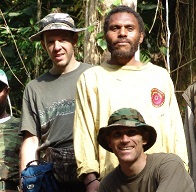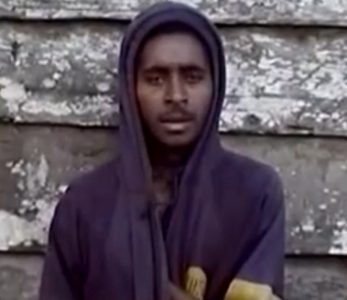By cryptozoologist Jonathan Whitcomb
I submitted the following comment to Snopes on January 12, 2017. If it is eventually published in full by them, then I’ll probably condense what’s written here:
I have been investigating reports of sightings of apparent pterosaurs for about 13 years, often getting emails from various parts of the world. A name now more-commonly used for apparent long-tailed living pterosaurs is “ropen,” which name comes from a few villages on Umboi Island, Papua New Guinea.
I led a brief expedition on Umboi Island in 2004, failing to see the nocturnal flying creature but getting a number of videotaped interviews of native eyewitnesses. (I am a certified forensic videographer; at the time of this expedition, I was videotaping for attorney firms, mostly in Southern California.) I found the native eyewitnesses to be highly credible, almost never hearing from them anything regarding their local superstitions about the ropen (which superstitions are common).
Since my expedition in 2004, I have written three nonfiction books about sightings of apparent pterosaurs (in eight editions). I have also written a peer-reviewed paper that was published in a journal of science. Some of my online writings, however, were written under two pen names, for a limited time. That resulted in criticisms, with some skeptics accusing me of dishonesty. I deny any desire to deceive anybody.
Yet a long-term criticism has been that eyewitnesses are dishonest. I have analyzed a number of characteristics in the details of what people report to me, however, and have found that, statistically, hoaxes have been eliminated as a viable general explanation. It is practically disproven in this sense: The overall sighting reports cannot have any significant contamination from hoaxes (several analytical methods were used to show this, each one working separately from the others).
Some skeptics have declared that all stories about ropens are false and that practically all of them come from me and that I have used deception in promoting believe in non-extinct pterosaurs. Yet I had returned from my 2004 expedition declaring that I had seen nothing unusual flying in Papua New Guinea. But critics appeared to be unhappy that I published much about my BELIEF in what eyewitnesses reported to me.
The point is this: The ropen can easily be dismissed as a general hoax because the possibility of non-extinct pterodactyls appears so hard to believe in Western cultures. Yet apparently-valid eyewitness sighting reports continue to come in, with some eyewitnesses revealing their real names.
American eyewitnesses include the following (partial list):
U.S. Marine Eskin Kuhn (Cuba, 1971)
Patty Caron (Cuba, 1965)
Sandra Paradise (Georgia, USA, 2008)
Brian Hennessy (New Guinea, 1971)
The late Duane Hodgkinson (New Guinea, 1944)
###
.
Both doubt and open to living pterosaurs, in a book review
A Whole New Level of Weirdness: Book Review of “Live Pterosaurs In America” (3rd Edition) [book by Whitcomb]
Youtube video of an interview with Duane Hodgkinson and Garth Guessman
Over the years of ropen investigations in this part of Papua New Guinea, some of the natives mention that the creature is hairy. Well, it just so happens that the “Pilosus” of Sordes Pilosus is Latin for “hairy.”
.






